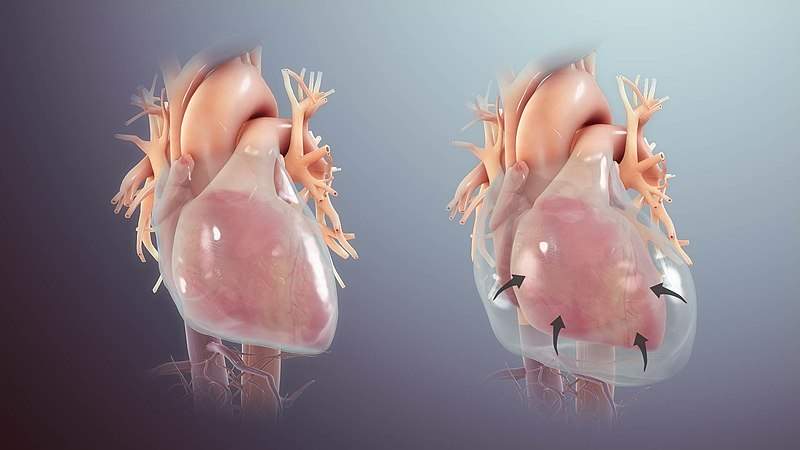
Pericardium
Pericardium
It is the fibro serous sac that encloses the heart and the root of its great blood vessel.
Function
- It prevents the excessive movements of the heart,
- It acts as a lubricated container in which the heart can contract and relax smoothly,
- It limits cardiac distension.
Subdivisions
1. Fibrous pericardium
It is an outer single-layered fibrous sac
2. Serious pericardium
It is an inner double-layer serious sac. Its two-layer are:
1. Parietal pericardium: it is an outer layer
2. Visceral pericardium: It is an inner layer
Difference between the parietal pericardium and serious pericardium
| parietal pericardium | visceral pericardium |
| it is attached to the fibrous pericardium | it is attached to the myocardium of the heart |
| It develops from the somatopleuric mesoderm | it develops from the splanchnopleuric mesoderm |
| it is introverted by somatic nerve fiber | It is innervated by the autonomic nerve fibers |
| It is pain sensitive | It is pain insensitive |
Contents of the pericardium
- Heart with its vessel and nerves
- Ascending aorta
- Pulmonary trunk
- SVC(lower half)
- IVC(terminal part)
- Pulmonary veins(terminal part)
Arterial supply
Both fibrous pericardium and the parietal layer of the visceral pericardium are supplied by branches of the following artery:
- Internal thoracic artery
- Musculophrenic arteries
- Descending thoracic aorta
The visceral layer of the serous pericardium is supplied by the coronary arteries.
Nerve supply
- The fibrous pericardium and the parietal layer of the serous pericardium are supplied by the phrenic nerve( somatic nerve fibers)
- The visceral layer of the serous pericardium is supplied by the branches of sympathetic trunks vagus nerve (automatic nerve fibers)
Sinuses of pericardium
Between the parietal layer and visceral layers of the serous pericardium, there are two sinuses
1. Transverse sinus
it is a transverse recess behind the ascending aorta and pulmonary trunk and in front of the SVC and superior pulmonary veins. It is developed due to the degeneration of the dorsal myocardium.
It is the horizontal passage between the two pericardial tubes. On each side, it communicates with the general pericardial cavity.
2. Oblique sinus
It is a recess of the serous pericardium behind the base of the heart. It is enclosed by a "J-shaped" sheath of the visceral layer of the serous pericardium enclosing six veins. They are two vena cavae and four pulmonary veins. The oblique sinus permits the distension of the left atrium during the return of oxygenated blood in it from the lungs.

Comments (0)